Checking out a flex tree
We are no longer building saddle trees, but we have two videos about how Western saddles fit horses available on our westernsaddlefit.com website.
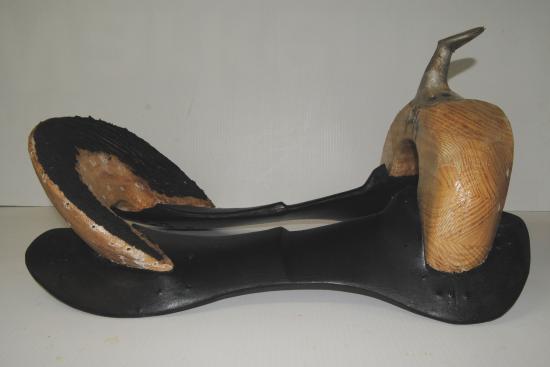
A while back we were contacted by some (relatively) local people who were concerned that one of their horses had developed white hair under the saddle which showed up late last fall. The story was that they have Missouri Fox Trotters and had ordered special gaited horse saddles with flex trees from the US for them. The horses seemed to be fine early last summer when they were doing shorter rides, but toward the end of the season they started doing some all day trail rides and even two or three day rides. One horse in particular started to act up - going along fine and then "scooting out" from under them with no warning. They originally put it down to temperament, but when the hair coat changed and they noticed the white hairs in the middle of his back, they started to wonder. Come spring, they went to the (relatively) local tack store to see if they could find something that fitted him better, and the store referred them to us.
The owners drove almost two hours each direction (I told you it was "relatively" local!) bringing a couple of their horses and their saddles for us to check out. It was April by this time and the horses had had the winter off, so it was too late to check for soreness. But small patches of roaning were visible on both sides of the horse under the center of the saddle - an unusual place for white hairs. When we put the saddle up and checked what was above the white hairs we felt an obvious lump which, on closer examination, turned out to be the stirrup leather sitting almost half way back on the length of the bar. Hmmm... The saddle also was not at all stable on the horse (a good sign that the shapes don't fit) and preferred to ride forward so the bars were over the shoulder blades (showing that the tree is too wide for the horse). After discussing the problem and likely causes, the owner decided to go with replacing the tree and using the old leather (if the "relatively" local saddle maker thought it was worth it) rather than trying to find something else that might work. So we got the chance to examine the tree up close and personal as we made a duplicate of it.
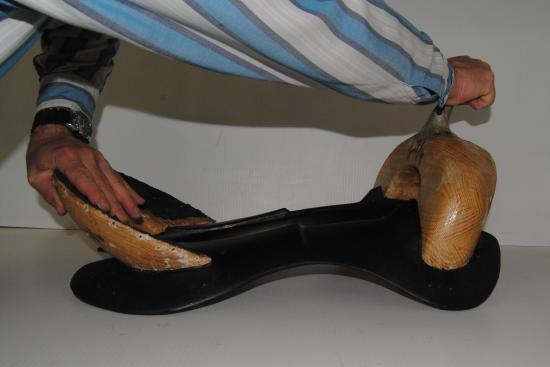
The idea behind a flexible bar tree is that there should never be any high pressure points because the bar will flex away from the horse as he moves, and therefore this should be "kinder" to a horse than a solid tree which might Poke him somewhere. At least that is the theory... The bars are a rubber type material while the fork and cantle are fibreglass covered pine.
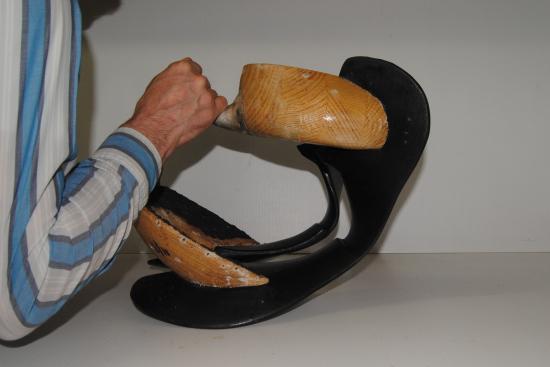
And the bars do flex. You can make the horn and cantle touch if you want! (Granted, it couldn't do this when it was all made up as a saddle.) But we have always wondered "If it flexes like this, what is stopping it from flexing under the rider's weight, putting excess pressure in the middle of the horse?" Now we had a chance to find out. (Answer at the end.)
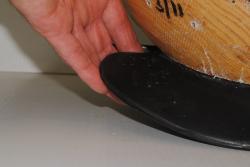 |
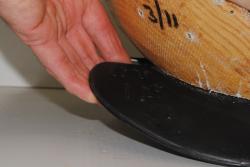 |
But how flexible is it where it counts - at the bar tips and edges where they might dig in? Well, compare these two pictures. The one on the left shows the bar tip without pressure. In the one on the right, Rod is pushing on the back bar tip with a lot of pressure as you can tell by the blanching of his fingers. See the amount of flex?
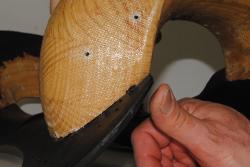 |
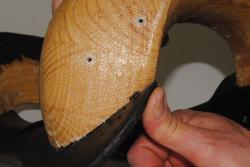 |
Not really? Well, try this one. Here he's pushing with his thumb to make it flex. See the difference?
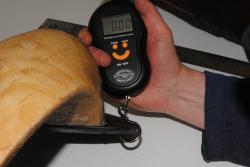 |
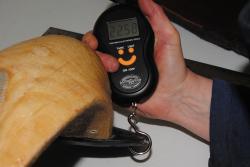 |
No? Well, maybe we're not putting enough pressure on. So here we tried with a scale. The one on the left reads 0.00 pounds. On the right it reads 22.58 pounds. Not a significant amount of deflection for that amount of pressure, is there? In playing with this tree, it is really hard to get the tips or edges to move much at all. So we can't see them flexing out of the way as the horse moves. The rubber is just too stiff.
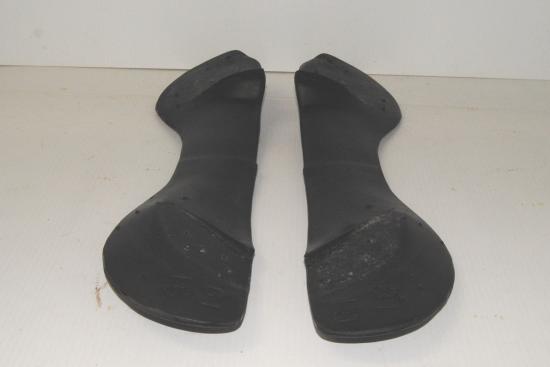
So if the "flex" idea doesn't work, how well is the tree designed otherwise? Well, the bars have both fork and cantle "cuts" on them to help position the pieces together well.
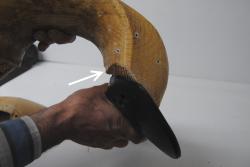 |
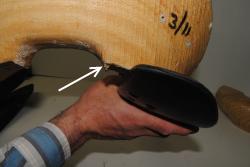 |
Both fork and cantle have a ridge built in on the inside edge of the gullet to help position them properly relative to the bars and they do line up easily to make assembly more accurate than it could be. As well, they are attached with screws - not staples - which vary from 1 1/2" to 3" in length, which are the longest screws we have ever seen in trees. So a lot of design has gone into how to put the pieces together.
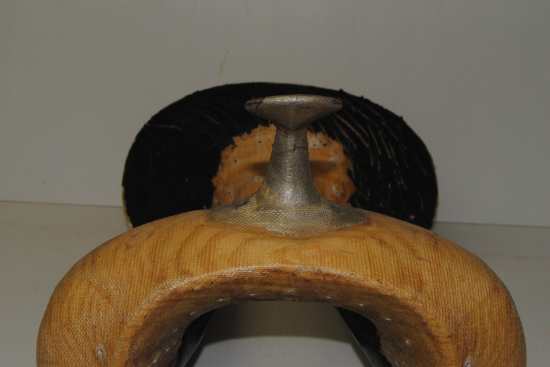
But when things are built to flex, it is hard to get or keep a tree square, even with those design factors built in. To be fair, this was a used tree so maybe it started out square.
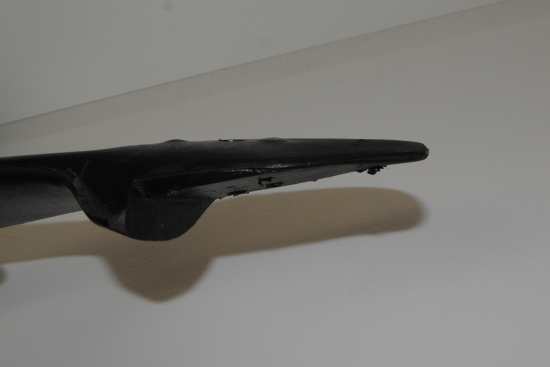
How about the bar design? Well, here's the front bar tip. It is very close to dead flat with a narrow edge. Not much relief or curve built into that to allow for shoulder movement. Maybe they count on the flexible material rather than bar shape to fit the horse but as we saw, the bars aren't that flexible...
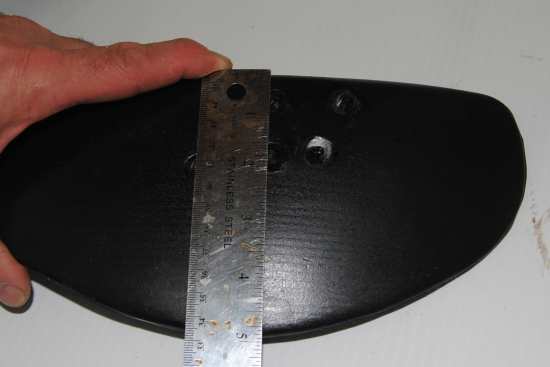
In checking through our factors that affect tree fit, surface area plays a big part. How do these bars measure up? The seat length measures at 17" in the tree with almost 10" of thigh room - a tree with a lot of room for the rider. But the bars are barely 22" long. (We have 22" as our minimum length unless it is a kid's tree.) They measure 5 3/4" across at the widest part of the front bar pad and less than 5" across at the widest part of the back bar pad. (Ours are over 6" wide, even on our "regular" bars, and are wider on our Wade bars.) So not a lot of surface area to play with.
Also, the gullet width (which is an inconsistent measurement anyway) was very wide at 7 1/2" wide and the hand hole measured 5 3/8" with the fiberglass on, so probably 5 1/2" in the wood. So the bars were set very far apart. (We made the duplicate 4 1/4" wide to fit the horse properly.)
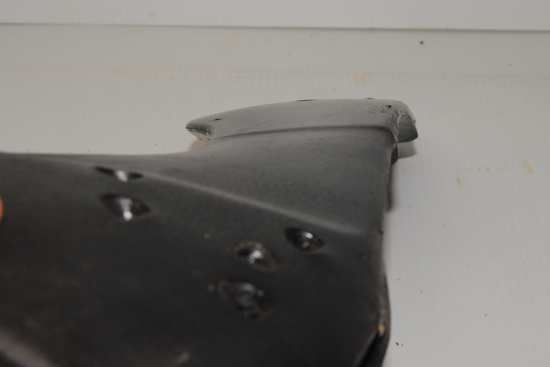
And what about the problem area - the stirrup groove and stirrup leather? Well, there is a slight indentation on the bottom of the bar for the stirrup leather. It measures about 1/8" deep at the front but less than 1/16" deep at the back, which is where the stirrup leather will generally end up.
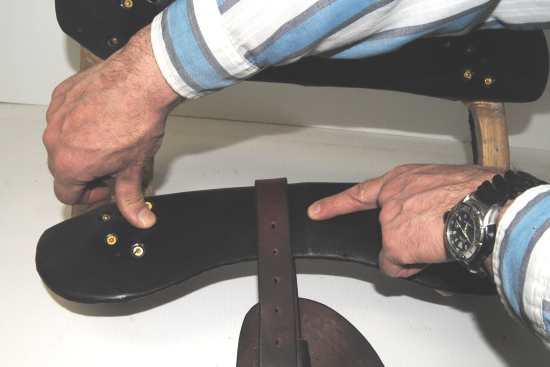
The stirrup groove itself is also extremely long. The top edge is 5 1/4" long (ours are 3 1/4") and the back edge of the stirrup groove ends 6" behind the fork. In talking with other hand made tree makers, everyone seems to put that back edge of the stirrup groove about 5" behind the fork. So the stirrup leathers would be sitting an inch farther back than in our trees.
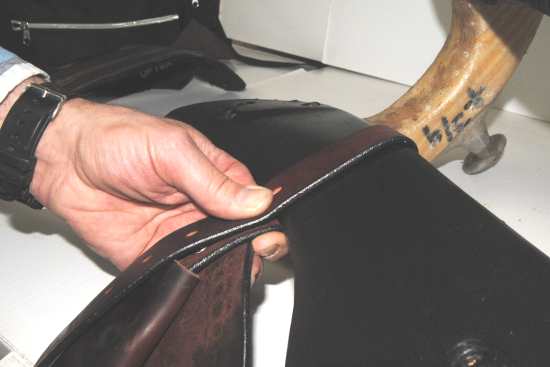
And all this space was used by a stirrup leather that was about 1 1/2" wide, and well over 1/8" thick. So the lump we felt through the skirts was this narrow stirrup leather sticking out below the level of the rest of the bar and sitting far enough back under the rider that their weight would press it down into the horse more than if it were farther forward.
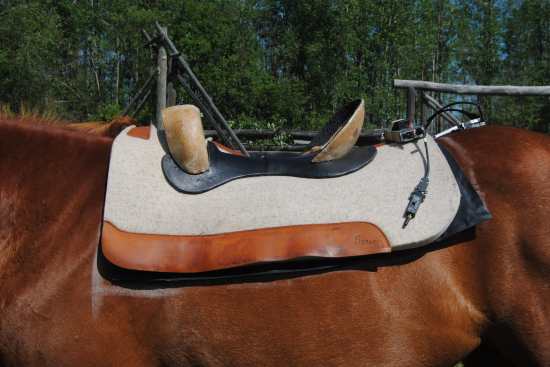
But the proof of the pudding is in the eating - and to see how a tree fits you have to try it on the horse. So when we were doing some initial tests with our new pressure sensor mat, we decided to try this one too.
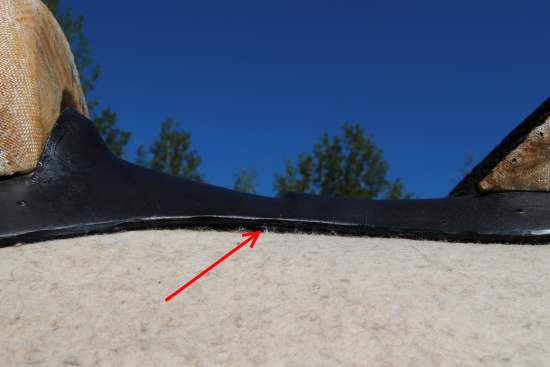
Our horse is more flat backed than this horse was so it would have been worse on their horse, but even on ours, the tree bridged. It is hard to see in the picture but the arrow points to sky seen between the bar and the pad.
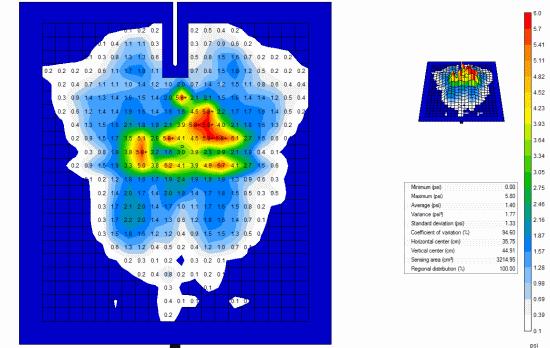
But when our niece sat on the tree, the answer to our question about what stops the bars from flexing under the rider's weight became clear - nothing! The poor relief built into the bar tips was inconsequential because the bar tips had no pressure on them at all. All the pressure was concentrated under the rider.
And this was without a narrow stirrup leather protruding from a too shallow stirrup groove which would have concentrated the pressure beneath it even more - causing a high pressure point, pain for the horse and eventually leading to the white hairs that triggered the owners to examine things further.
So... we made a solid duplicate tree to fit the shape of the horse, the saddle maker put it all back together better than it was in the first place (I won't go into saddle construction but it was "interesting") and the last we heard the horse was being used regularly and doing well. The owners were also talking about getting a saddle built to replace the other flex tree saddle they have...
